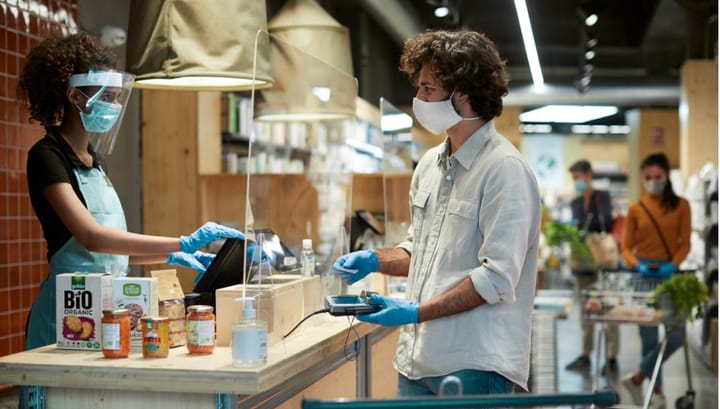Placemaking for local economic development

Placemaking is an important strategy for local economic development
Download the PDF Version of this article here.
I have a long history of involvement in placemaking, most recently as the former deputy chairperson of Leederville Connect in Western Australia. Of course, and as others have noted, ‘the business and practice of making a successful urban place may be nearly as old as cities themselves.’ For a long time, local economic development has applied placemaking strategies to make urban centres more dynamic and competitive.
My interest in placemaking concerns the contribution these participatory processes make to inclusive economic growth. While this contribution is assumed, it is not always clear.
If it is to work effectively, placemaking needs to be designed and managed based on a careful analysis of the local economy.
The social dimensions of economic development
I know of few better illustrations of the vital connection between social and economic development than placemaking.
It’s strange, but we often have to remind ourselves that social and economic development are closely connected. Indeed, the divisions between ‘the social’ and ‘the economic’ are somewhat arbitrary and not always helpful. From the perspective of place or location, these divisions can be particularly unhelpful.
While its roots are found in urban planning, placemaking is largely a social activity that improves the quality of life in a local area. One of the many desired outcomes of placemaking is to improve liveability and strengthen the attachment people have to an area.
Studies show significant correlation between community attachment and economic growth. Cities with the highest levels of attachment have the highest rate of economic growth.
Placemaking for quality places
While some suggest that placemaking is the same as place-based economic development, I would argue against this. Placemaking is one of many tools available for promoting place-based economic development.
Used correctly, placemaking can significantly improve the liveability of a local area, attracting private investment, new businesses and skilled workers.
The Project for Public Spaces defines placemaking as:
a multi-faceted approach to the planning, design and management of public spaces.
Placemaking capitalises ‘on a local community’s assets, inspiration and potential, ultimately creating good public space that promotes people’s health, happiness and well-being.’
Researchers at the Michigan State University, have differentiated placemaking types. These include:
- Standard Placemaking. The process of creating quality places that people want to live, work, play, and learn in.
- Strategic Placemaking. The process of creating quality places that are uniquely attractive to talented workers so that they want to be there and live there. Placemaking creates the circumstances for job creation and income growth by attracting businesses that are looking for concentrations of talented workers.
- Creative Placemaking. Where partners from public, private, non-profit, and community sectors strategically shape the physical and social character of a place around arts and cultural activities. This is done by animating public and private spaces, rejuvenating structures and streetscapes, improving local business viability and public safety, and bringing diverse people together to celebrate, inspire and be inspired.
- Tactical Placemaking. The process of creating quality places that uses a deliberate and phased approach to change that begins with a short-term commitment and realistic expectations that can start quickly and often at low cost.
While some of these types overtly refer to economic development or the dynamics of local economies, all can contribute in some way to local economic outcomes. Multiple types of placemaking can be applied, both consecutively and sequentially, depending on the desired objectives.
The role of placemaking in local economic development
Placemaking is an important tool in local economic development. It can be used to address a number of specific local economic problems, needs or opportunities.
Creative placemaking, for example, can be used to achieve liveability, diversity and economic development goals:
Economic development quickens because arts and cultural investments help a locality capture a higher share of expenditures from local income. Instead of traveling elsewhere for entertainment and culture or going to a big-box retailer or shopping mall, residents are patrons of local talent and venues, earnings that re-circulate at a higher rate in the local economy.’
Creative placemaking contributes to economic development in six ways:
- Recirculates residents’ incomes locally at a higher rate;
- Re-uses vacant and underutilized land, buildings, and infrastructure;
- Creates jobs in construction, local businesses and cultural activity;
- Expands entrepreneurial ranks of artists and designers;
- Trains the next generation of cultural workers; and
- Attracts and retains non-arts-related businesses and skills.
More generally, placemaking can contribute to a wide range of important local economic development strategies and outcomes. Here are some examples:
- Build social trust and cohesion. Placemaking creates social organisations and local alliances that are used to build trust and nurture cooperation and collaboration. These increased local interactions create better conditions for sharing information and experience and foster stronger commercial and economic connections.
- Improve property values. Property value studies have illustrated the positive impacts of locations with nearby placemaking amenities, green infrastructure, historic properties, and transit access. Properties featuring these elements in close proximity stand to attract the most growth and attention.
- Location efficiency. Companies and workers are more productive in large and dense urban environments. Dense places have a greater ease of getting to a destination––more important than how fast you get there. Walkable places have the highest accessibility and lowest transportation costs, and with reduced transportation costs households can afford to spend more on housing.
- Strengthen local branding. Placemaking can help urban centres to establish a brand or set of features that help define their comparative and competitive advantages. This makes us more than a ‘dot on the map’; we become a place with values, capacities and expectations. This helps to attract visitors, investors, businesses, and workers.
- Promote innovation and entrepreneurship. Placemaking can reconfigure the ways governments and business interact, connecting with research, development and teaching institutions. Working with local anchor institutions, placemaking can nurture local industry clusters, support new start-ups and encourage public and private innovation.
Strengthening the economic focus of placemaking strategies
In the United States, support ‘transformative placemaking’ has a strong and clear economic focus. This kind of placemaking endeavours to:
- Nurture an economic ecosystem that is regionally connected, innovative and rooted in the assets of local residents and businesses;
- Support a built environment that is accessible, flexible and advances community healthy and resiliency;
- Foster a vibrant, cohesive social environment that is reflective of community history and identity; and
- Encourage civic structures that are locally-organised, inclusive and support network building.
Experience from the City of Exeter in England found its local economy was inextricably linked to placemaking. The City formulated its economic development strategy on the key drivers to establishing a successful knowledge-based economy:
- Creating the physical requirements. Having the architecture and accommodation that businesses and workers require.
- Building on what’s there. Recognising the city’s existing strengths and weaknesses and playing to these.
- ‘Smart specialisation’. Focussing on the range of economic specialisms for which there are credible opportunities, particularly in sectors related to big data, climate change mitigation, health, water science and agri-tech.
- Attracting and retaining high skill organisations. Organisations that rely on productivity through high quality jobs and highly skilled people;
- An acclaimed education sector. Linked closely with the city and businesses;
- A distinctive ‘knowledge city’ offer. For businesses and people who are considering investing, working and living in the city, supported by a diverse cultural offer;
- Maintaining and improving strong connectivity. This encompasses connections within and outside the city economic area with major economic hubs.
- Strong leadership. Around an economic vision supported by proactive networks and partnerships; and
- A business-friendly and pro-growth local administration.
The International Economic Development Council (in the United States) says:
For many economic development organisations, focused efforts to create active, attractive places is not a new activity. What is new is wider recognition that such efforts are closely linked to a community’s economic success, and not mere window dressing.
Measuring the economic benefits of placemaking
Measuring the economic benefits of placemaking improves the design, management and return on investment.
Placemaking should be a part of any local economic development strategy. The form and focus placemaking take will depend on the structure and dynamics of the local economy.
I’ve often seen placemaking done for ‘feel good’ reasons. It can be treated as a marketing exercise. This undermines the true economic benefits that can be achieved.
The outcomes of better social attachments and stronger local networks have an economic character, as I’ve described above. However, better local economic returns can be generated if there is a clearer understanding of the role placemaking can play in the local economy.
If the economic benefits of placemaking are to be realised, a clear economic rationale should be established.
This also requires accurate monitoring of placemaking activities to ensure the desired economic outcomes are achieved. Often, placemaking activities are measured using events management metrics: number of people who attended the event, number of social media mentions and likes, visitor satisfaction, etc.
Sadly, these metrics fail to capture the economic benefits of placemaking.
The metrics for placemaking success should be framed around the economic rationale. Examples include:
- Changes in the level of local business engagements, interactions, clustering, etc. Increases over time can be evidence that local connections are being formed and experiences are being shared.
- Changes in the liveability of the area. For example, as shown by the amount of new skilled workers moving to the area or the increases in the amount of time residents and businesses stay in the area.
- Changes in private investment levels. More private investors are investing in the local economy (e.g., properties, businesses).
- Changes in employment. More local jobs are being created.
The actual metrics will vary from place to place. While issues like the number of local jobs might be considered a long-term outcome of placemaking and hard to link––or attribute–– to placemaking, these are important measures all place-makers and economic development practitioners need to bear in mind.
Creating your local competitive advantage
Placemaking is one of many tools to use to improve your local competitive advantage. However, as researchers from Michigan State University highlight:
As important as place-based policies are—and they are critically important—other issues must also be successfully tackled, and many of these issues have interconnected elements.
Local governments, town teams and other business and residents associations can use placemaking as a strategy for local economic development. Applied carefully, placemaking enhances the economic and employment opportunities of local areas.
Any municipality can create the kinds of places growing companies seek, says Smart Growth America. While many towns and cities already have the kinds of neighbourhoods these companies are looking for, not all do:
Any municipality can create the kinds of places these companies seek. For cities that want to attract these kinds of companies, creating great, quality neighbourhoods is an economic development strategy that cannot be ignored.
Get in touch!
If this post deals with issues of interest to you or you want to talk more about using placemaking for local economic development, then feel free to get in touch.
Also, check out the MyPlaceMatters website.
Simon White
Economic Growth | Business Development | Job Creation




